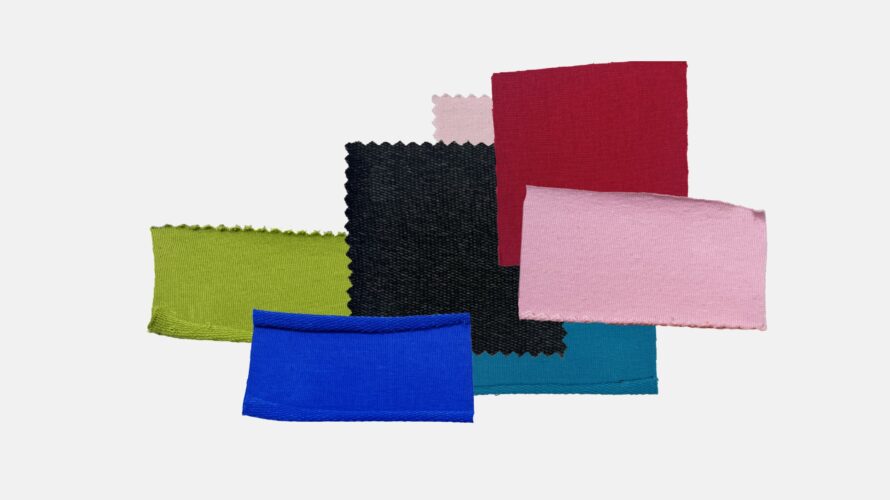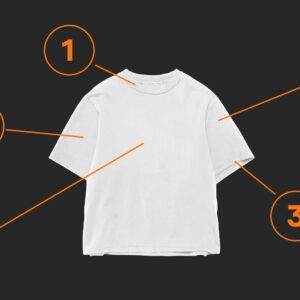Understanding the different types of fabric: a comprehensive guide for all
31/01/2025

Fabrics are the backbone of the fashion, textile, and promotional industries, providing not only the raw material for clothing and accessories but also giving life to creative designs. Whether you are planning to purchase corporate merchandise, create your own fashion line, or simply want to learn more about the world of textiles, understanding the different fabric types is crucial. This article will explore the classifications, characteristics, and uses of various types of fabric, helping you make informed decisions when selecting fabrics for your next project.
How are fabrics classified?
Fabrics are primarily classified based on the fiber content, method of production, and their characteristics. The types of fabric can be broadly divided into three main categories:
- Natural
- Synthetic
- Specialty
Fiber composition and manufacturing methods
The way a fabric is woven, knitted, or processed also contributes to its properties. Fabrics can be produced by weaving yarns together (woven textiles), knitting threads to form loops (knitted textiles), or bonding fibers in a non-woven manner.
The structure and the type of fiber used in the fabric dictate its appearance, feel, durability, and suitability for different uses. These fundamental classifications influence the look, texture, durability, and comfort of the fabric. Below, we will break down the different fabric types in detail.
Natural fabrics
Natural fabrics are made from raw materials derived from plants, animals, or minerals. These fabrics tend to be breathable, comfortable, and often environmentally friendly. Let us take a look at some of the most common natural textile types.
Cotton
It is the most widely known and used natural material. It comes from the cotton plant’s soft fiber and is favored for its softness, breathability, and absorbency. Cotton fabrics come in different types, such as combed cotton (softened and cleaned), organic cotton (grown without pesticides), and Egyptian cotton (known for its high quality and long fibers).
- Uses: T-shirts, bed linens, towels, and more.
- Advantages: Soft, breathable, and easy to dye.
- Care: Machine washable, but it can shrink if not handled properly.
Linen
Linen is derived from the flax plant and is known for its lightness and crisp texture. It has been used for centuries and is favored in warm climates because it absorbs moisture and dries quickly.
- Uses: Summer clothing, bed sheets, tablecloths.
- Advantages: Breathable, cool to the touch, and naturally resistant to bacteria.
- Care: Tends to wrinkle easily and may need ironing.
Wool
It is a natural material sourced from sheep, goats (such as cashmere or alpaca), and other animals. Wool is known for its insulating properties, making it an excellent choice for colder climates.
- Uses: Sweaters, scarves, suits, blankets.
- Advantages: Warm, moisture-wicking, and flame-resistant.
- Care: Wool requires gentle care; dry cleaning is often recommended to preserve its texture.
Silk
Silk is one of the most luxurious fabrics, derived from silkworms. It is known for its natural sheen, smooth texture, and elegance.
- Uses: High-end fashion, ties, scarves, and bedding.
- Advantages: Soft, smooth, and breathable, with a natural sheen.
- Care: Requires special care, often handwashing or dry cleaning to avoid damage.
Synthetic fabrics
Synthetic fabrics are man-made materials created through chemical processes. These types of textile are generally more durable, affordable, and versatile than natural textiles. Some of the most popular synthetic fabric types include:
Polyester
Polyester is one of the most widely used synthetic fabrics due to its durability, resistance to wrinkles, and affordability. It is made from petroleum-based products and is often blended with natural fabrics for enhanced durability.
- Uses: Sportswear, upholstery, shirts, and dresses.
- Advantages: Stain-resistant, durable, and affordable.
- Care: Easy to care for—machine washable and does not shrink.
Nylon
Nylon is known for its strength, elasticity, and resistance to wear. It is often used for items that require strength and flexibility.
- Uses: Outerwear, activewear, and accessories like bags and backpacks.
- Advantages: Lightweight, resistant to abrasion, and water-resistant.
- Care: Machine washable and durable.
Acrylic
Acrylic fabric is a soft, lightweight material that is often used as a substitute for wool. It is made from polymer fibers and can mimic the feel and look of natural fibers like wool.
- Uses: Sweaters, hats, and blankets.
- Advantages: Soft, lightweight, and affordable.
- Care: Machine washable and resistant to fading.
Spandex
Spandex, also known as Lycra or elastane, is a highly elastic material often used in activewear and sportswear. It provides excellent stretch and recovery, allowing garments to maintain their shape.
- Uses: Workout clothes, leggings, swimsuits.
- Advantages: Highly elastic, forms to the body, and lightweight.
- Care: Hand wash or machine wash on a gentle cycle.
Specialty fabrics
In addition to the basic textile types, there are several specialty textiles that are designed for specific uses. These materials often feature advanced properties that enhance their functionality.
Water-resistant fabrics
These fabrics are treated with coatings or are naturally resistant to water. They are ideal for making outerwear, umbrellas, and outdoor gear.
- Uses: Rain jackets, outdoor gear, and sportswear.
- Advantages: Keeps you dry in wet conditions.
Flame-retardant fabrics
Flame-retardant materials are designed to resist ignition or slow the spread of flames. These materials are essential in industries where safety is a priority, such as construction and firefighting.
- Uses: Safety uniforms, protective gear.
- Advantages: Provides protection against fire hazards.
Eco-friendly fabrics
Eco-friendly fabrics are made from sustainable materials, such as organic cotton, bamboo, or recycled polyester. These fabrics are becoming increasingly popular as consumers and businesses seek to reduce their environmental impact.
- Uses: Eco-conscious apparel, corporate gifts, and accessories.
- Advantages: Biodegradable, sustainable, and often less resource-intensive.
Fabric care and usage
Proper care for different fabric types is essential for maintaining the quality and longevity of your clothing and merchandise. Here are a few fabric care tips:
Natural fabrics
- Cotton: Machine wash in cold water and avoid using high heat to prevent shrinkage.
- Linen: Wash gently in cold water, and if necessary, iron on a medium heat.
- Wool: Dry clean or hand wash with mild detergent. Avoid wringing or twisting to maintain the shape.
- Silk: Hand wash with mild detergent or dry clean to prevent damage.
Synthetic fabrics
- Polyester: Machine wash in warm water and dry on a low heat setting.
- Nylon: Machine washable and quick-drying, but avoid using high heat when drying.
- Acrylic: Wash in cool water, and avoid heat drying to prevent shrinking.
- Spandex: Wash with care, and avoid heat to preserve elasticity.
Specialty fabrics care
Specialty fabrics require extra care, especially since they are engineered for specific performance attributes like moisture resistance, flame retardance, or eco-friendliness. Here are some general tips for caring for specialty fabrics:
- Water-resistant fabrics: Clean using a gentle detergent and avoid fabric softeners, as these can compromise water resistance. If the water-resistant coating wears off, you can reapply it with a fabric treatment spray.
- Flame-retardant fabrics: These fabrics should be washed carefully as frequent washing may diminish their protective qualities. Always follow the manufacturer’s guidelines for cleaning. Dry cleaning is often recommended for these types of fabrics to maintain their safety properties.
- Eco-friendly fabrics: Many eco-friendly fabrics are made with natural fibers and are more sensitive to wear. Wash with gentle detergents and air dry when possible to prevent shrinking and to preserve the eco-friendly features.
General tips for all fabrics
- Always check the care labels before washing any fabric to avoid shrinkage or damage.
- For delicate fabrics, use a gentle cycle or hand wash to preserve their texture.
- Air dry fabrics when possible to maintain their structure and avoid damage from high heat.
Conclusion
Understanding the different fabric types is crucial when selecting fibers for clothing, corporate gifts, or other merchandise. Whether you choose natural materials like cotton, linen, wool, or silk, or synthetic ones such as polyester, nylon, or spandex, each material type offers its own set of benefits. Proper care is also essential to extend the life of the fabric and maintain its quality.
Specialty fabrics, such as water-resistant or flame-retardant materials, offer added benefits for specific needs. If you are aiming for eco-conscious options, eco-friendly fabrics are a great choice for sustainable merchandise. By considering the characteristics of each material, you can choose the perfect fiber for your next project, ensuring comfort, durability, and style.




